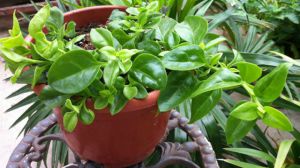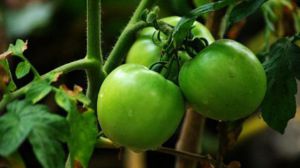Jasmine longevity burst for 10 years, it all depends on this sentence, do not know the loss is big!

Succulent, tiger skin orchid-dry and thoroughly poured
Dryness and penetration technique
Wait for the basin soil to be completely dry and then irrigated. When watering, the basin soil should be completely wet and thoroughly watered up and down, not "waist water". It is usually poured thoroughly when you see a small amount of water seeping out from the bottom of the basin.
Suitable plant
Dry and thoroughly poured is suitable for drought-resistant and waterlogging-resistant plants, such as aloe, succulent, tiger skin orchid, tequila and so on.
Gardenia and rhododendron-see dry and wet
The skill of seeing dry and wet
"see dry" means that when the surface of the basin soil is dry or a little white, water the flowers. Do not wait for the basin soil to be completely dry before watering. "see wet" means "thoroughly". A small amount of water can seep out from the bottom of the basin.
Suitable plant
This method is suitable for plants that like moisture and fear drought, such as rhododendron, camellia, gardenia, glass Cui, Milan, Michelia, Catharanthus roseus and so on.
Green pineapple and magnolia-alternating between dry and wet
Dry-wet alternating technique
The alternation of dry and wet is between "dry and wet" and "dry and wet". Generally speaking, when the basin soil is almost dry, but there is still a trace of moisture, when it is not completely dry, it will be watered thoroughly.
Suitable plant
This method is suitable for semi-negative plants that like warm and humid, but can not tolerate large water, such as orchid, green apple, hanging orchid, white palm, crab claw orchid, dripping Guanyin and so on.
Note: using the dry-wet alternating method, the dry and wet condition of the soil and the watering time are not easy to grasp, you can insert a bamboo stick to judge, pull it out every few days, and when the color turns yellow and white gradually, you can water it.
Cactus, black pine-- better dry than wet
Better dry than wet
It is better to water less than make the soil too wet. Every time you water it, make sure the soil is completely dry and then watered. The interval between dry and wet watering is longer than that of dry watering.
Suitable plant
This principle applies to plants that are drought-tolerant, barren and afraid of stagnant water, such as golden tiger, cactus, black pine and so on.
Copper grass and rich bamboo-- better wet than dry
The skill of getting wet rather than dry
It is better to be wet than dry, that is, the basin soil should always be kept wet and should not be dry and dehydrated.
Suitable plant
Plants that like water and are resistant to waterlogging and drought should be watered in accordance with the principle of dampness rather than dryness, such as coppergrass and bamboo, which are suitable for half-soil and half-water.
Four points for attention in watering
1. Don't water at noon
Watering time is best chosen in the morning or evening, must avoid watering at noon, especially at noon in midsummer, but also can not use cold water to water flowers. It's best to bask in the tap water first to make sure you don't feel cold when you reach into the water.
2. Timing and quantification
No matter what kind of flowers, watering should be regular, regular and quantitative, for a long time, plants will adjust their metabolism to adapt to the frequency of watering. A hungry meal and a full meal must affect your health.
This water can water the flowers
Sun-dried tap water, Rain Water, river water, air-conditioning condensate and so on can all be used to water flowers.
This water can't water the flowers.
Soapy water, washing powder water, dishwashing water, etc., had better not be used to water flowers, alkaline is too strong, easy to burn roots. But low concentration of soapy water and washing powder water can spray branches and leaves and disinfect flowers.
- Prev

How to water peony orchid in summer
Gentleman orchid grows very vigorously in summer, usually watering every 3 to 5 days. Usually, you can spray water around the leaves and flowerpots to maintain high air humidity. Don't water too much and keep the soil slightly moist. In addition, when watering, you must wait until the soil is completely dry before watering.
- Next

How to plant tomatoes on the balcony
Sow and raise seedlings: prepare the potted soil, soak the seeds in warm water for 10 hours, and then plant them in flowerpots. Cover the surface with thin soil. Put into the pot: when the seed grows leaves, it can be put on the pot. In addition, in daily management, water can be watered every 3 to 5 days, and fertilizer can be applied about 10 days after potting.
Related
- What if the leaves of potted flowers turn yellow?
- Florescence Control of several Flowers
- Anti-freezing technology and post-freezing nursing technology of flowers
- What is the classification of flowers? What are the common methods of flower classification?
- Prevention and control of alkali and acid damage of flowers in courtyard
- Technology of Anti-freezing and restoring growth of Flower seedlings in greenhouse and greenhouse
- How does flower fertilization not hurt the root? Fertilization technology of flowers
- Key points of disinfection in flower greenhouse
- Several pesticides that are banned or used cautiously in flowers
- How to fertilize the flowers that watch the leaves?

